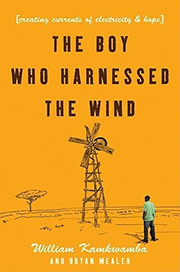This post was written by NCTE member Yvonne de St. Croix.
At a time in education when the narrative focuses on taking a global perspective more than at any other time in the lives of elementary school students, the opportunity to crosswalk among globalization, critical thinking, and proposing solutions to authentic problems must be offered.
As the gifted and talented educator serving a culturally and linguistically diverse PreK–5 school in an urban school district, I actively seek collaborations with teachers to enhance learning opportunities for diverse student populations. In gifted education, students who are culturally and linguistically diverse are underrepresented in being identified and receiving services. Yet providing learning opportunities that differentiate based on learning preference, readiness, and interest can be a valuable support for all students.
 Recently I have been so fortunate to have had the opportunity to work with Ms. Jane Wall’s fifth-grade class as they conducted a social justice book study of The Boy Who Harnessed the Wind.
Recently I have been so fortunate to have had the opportunity to work with Ms. Jane Wall’s fifth-grade class as they conducted a social justice book study of The Boy Who Harnessed the Wind.
The Boy Who Harnessed the Wind is a novel recognizing “human inventiveness and its power to overcome crippling adversity [that] will inspire anyone who doubts the power of one individual’s ability to change his community and better the lives of those around him.”
Ms. Wall and I selected this book as a way to nurture the social emotional intelligence of the diverse members of her classroom while enriching the students exposure to issues impacting the global population through literature.
Recognizing the assets that bilingual students bring to a classroom, we ordered copies of the novel not only in the English translation, but also in Spanish. We also purchased copies of the novel in picture book format to support inclusion and accessibility for students.
The lessons prepared by Ms. Wall incorporated support structures and opportunities to explore cultural assumptions for the diverse learners within her class. Additionally, Ms. Wall coordinated the novel study with her colleagues Ms. Campos and Mr. Camargo, who provided ESL/ELL support for the students to ensure all classroom stakeholders would be involved.
Initial whole-class opportunities included read-alouds of the chapters interspersed with discussion and vocabulary exploration. Often a low murmur could be heard among the engaged students: “I like this chapter.”
Students were given the opportunity to reference and reframe vocabulary within the content of their own linguistic and cultural backgrounds. Initial questions posed by Ms. Wall developed into deeper explorations by students. Among the questions students explored:
- Can desperation drive innovation and creativity, and if so, how?
- In what ways does finding solutions involve science and flexibility?
During our Socratic seminars and class discussions, many different issues emerged. The class discussed the government corruption in Malwai and how that impacted grain distribution. This led into multiple discussions about politics and political systems. The Boy Who Harnessed the Wind discusses supply and demand, in order to explain the desperate measures people took to get food when the supply was low as well as the systems in place that permitted such inflation. Students had many questions about supply and demand and this led into discussions on GDP.
There were also conversations about health issues, food insecurity, and diseases like Kwashiorkor, and the class discussed how many people in Malawi did not have access to healthcare. Class conversations naturally led into discussions about these types of topics, and when Ms. Wall realized that students had particular interests, she allowed them to collaborate in small groups based on similar interests to research those topics in more depth and to discuss potential solutions to social issues.
Ms. Wall explained to students that joining together with others who also felt passionate about an issue is how people in the real world start advocacy projects. The students were actively engaged in this authentic research-based interest-driven learning process. The process could additionally support student pursuit in social justice issues in the future.
Throughout the activities, students exhibited the characteristics of quick learning, abstract thinking, the ability to see relationships easily, and a keen sense of justice. Students continued to interact with their teachers, collaborating and expanding their higher order thinking skills. Because this novel study content was integrated with student input, students felt valued in the input they provided while also benefiting from exposure to global cultures and gaining an appreciation of world issues that shape their place in the contemporary world.
References
Baldwin, A.Y. (2004). Culturally diverse and underserved populations of gifted students. Thousand Oaks, CA: Corwin Press.
VanTassel-Baska, J., MacFarlane, B. & Baska, A. (2017). Second Language Learning for the Gifted: Connection & Communications for the 21st Century. Washington, DC: NAGC Select.
 Yvonne de St. Croix is a high-energy optimist who performs in the field of gifted education 6 with perseverance and curiosity. She holds a doctorate in educational leadership and has 18 years of experience as a talented and gifted coordinator, practitioner, researcher, and specialist. Her research includes qualitative and quantitative data analysis to advise and recommend cohesive and proactive educational practice and discourse. She collaborates with leaders and stakeholders in advocating for the gifted and talented at the local, state, and national levels.
Yvonne de St. Croix is a high-energy optimist who performs in the field of gifted education 6 with perseverance and curiosity. She holds a doctorate in educational leadership and has 18 years of experience as a talented and gifted coordinator, practitioner, researcher, and specialist. Her research includes qualitative and quantitative data analysis to advise and recommend cohesive and proactive educational practice and discourse. She collaborates with leaders and stakeholders in advocating for the gifted and talented at the local, state, and national levels.
It is the policy of NCTE in all publications, including the Literacy & NCTE blog, to provide a forum for the open discussion of ideas concerning the content and the teaching of English and the language arts. Publicity accorded to any particular point of view does not imply endorsement by the Executive Committee, the Board of Directors, the staff, or the membership at large, except in announcements of policy, where such endorsement is clearly specified.

